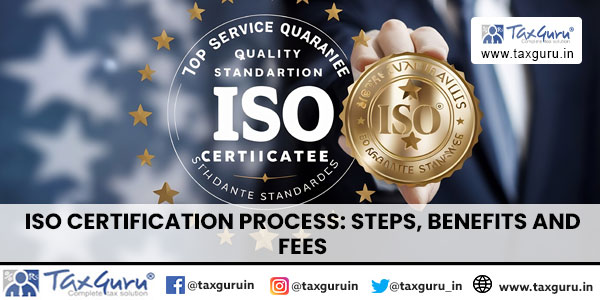The term ISO refers to International Organization for Standardization. It is an independent organization, which provides standards in terms of quality, safety, and efficiency of products and services provided by businesses. It helps to improve the business credibility as well as overall efficiency of the business.
OBJECTIVE OF ISO CERTIFICATION– ISO certification provides a set of globally recognized standards for various aspects of business operations, including quality management, environmental management, information security management, occupational health, and safety management, food safety management, and energy management. The certification process involves an independent assessment of the business’s management system to ensure that it meets the requirements of the relevant ISO standard.

Before starting with the process of ISO certification, there is a pre requisite of choosing the type of ISO certification, required for the business and some of the types of ISO certification are like:
1. ISO 9001 2008 – Quality Management
2. ISO 14001 – Environmental Management
3. ISO 27001– Information security Management
4. ISO 22008 – Food Safety Management and so on.
There is also required for selection of ISO certification body as ISO itself does not provide certification to the companies. It is very important for choose recognized and credible certification body. Factors like evaluation of several certification service providers, compliance with the applicable standards and the credibility of the service providers are also in considered before confirming the process of ISO with them.
PROCESS OF ISO CERTIFICATION: The streamlined process of ISO certification typically involves in the following steps:
1. Selection of type of ISO certification needed: The first step of the applicant is to the selection of the ISO standard and ISO certification body and preparing the application with the supported documents that should contain rights and obligations of entrepreneur and certification body parties and includes liability issues, confidentiality, and access rights.
2. Appointing service provider of ISO certification: To apply for the ISO certification process, there is a requirement for the appointment of ISO certification body that will review all the quality manuals and documents related to various policies and procedures being followed in the organization. Review of existing works will help the ISO registrar to identify the possible gaps against the requirements stipulated in the ISO standards.
3. Documentation process: The next step is to prepare necessary documentation, which includes a Quality Manual, Procedures, and Work Instructions. This documentation will help demonstrate that your business follows the requirements of the relevant ISO standard.
4. Preparation for Quality Management System (QMS): The benefit of implementing the QMS is to identifying and managing risks, documenting and controlling procedures, and performing internal audits. It covers the two stages of Audit which includes review of documents and site audit for ensuring the completion of process as per the standards specified.
5. Issuance of ISO Certification: The certification body, on the basis of evaluation of stages of audit and ensuring the compliance with the applicable standards, issued ISO certification.
6. Surveillance Audit procedure: After certification, the CB will conduct surveillance audits to ensure the QMS meets the standard’s requirements.
7. Re-certification Audit: After three years, the QMS will be re-certified based on a re-certification audit.
There are several benefits for the companies and their management to getting certified from ISO. These benefits are specified below-
- Improved risk management
- Access to new markets
- Cost Savings
- Enhanced credibility
- Increased customer satisfaction
- Improved quality management
- And many more as specified in the announced amendments.
For maintaining the quality of standards and avoiding the penalty from non-compliances, the management has to comply with the specified requirements that helps in maintaining the trust and credibility in the society. These are-
- Identifying and addressing non-conformities and taking corrective and preventive actions for reducing risk.
- Kept records related to the QMS and maintaining document control, that ensures credibility.
- Ensuring that employees are trained on the QMS and are aware of their responsibilities
- Documenting processes and procedures related to quality control and management responsibility.
- Implementing a quality management system (QMS) that addresses the needs of the applicable ISO standard
- Establishing and maintaining a management system that is focused on continual improvement
Applicable Fee for ISO Certification-
The ISO certification body will compute the fee for ISO certification by considering the below mentioned different parameters:
i. Size of the organization
ii. Number of employees
iii. Level of risk associated with the primary business activity
iv. Complexity of management system
v. The number of working shift





